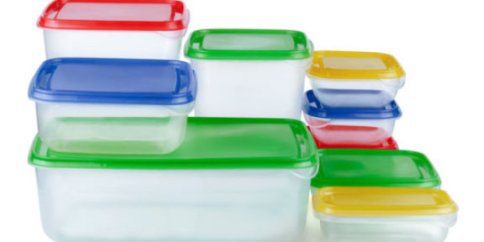
Plastics are made from oil. Oil is a carbon-rich raw material, and plastics are large carbon-containing compounds.
Plastics are simply chains of like molecules, called polymers, linked together. This is why many plastics begin with “poly,” such as polyethylene, polystyrene, and polypropylene. Polymers often are made of carbon and hydrogen and sometimes oxygen, nitrogen, sulfur, chlorine, fluorine, phosphorous, or silicon.
The first synthetic plastic was made from the plant material cellulose. In 1869, John Wesley Hyatt, an American printer and inventor, found that cellulose nitrate could be used as an inexpensive substitute for ivory. The mixture could be plasticized with the addition of camphor. Celluloid, as this new material was called, became the only plastic of commercial importance for 30 years. It was used for eyeglass frames, combs, billiard balls, shirt collars, buttons, dentures, and photographic film.
In 1951, two young research chemists for Phillips Petroleum Company in Bartlesville, Okla., made discoveries that revolutionized the plastics world. Today, the plastics they discovered—polypropylene and polyethylene—are used to produce the vast majority of the thousands of plastics products all over the world.
How does petroleum become plastic?
1. Petroleum is drilled and transported to a refinery.
2. Crude oil and natural gas are refined into ethane, propane, hundreds of other petrochemical products and, of course, fuel for your car.
3. Ethane and propane are “cracked” into ethylene and propylene, using high-temperature furnaces.
4. A catalyst is combined with ethylene or propylene in a reactor, resulting in “fluff,” a powdered material (polymer) resembling laundry detergent.
5. Fluff is combined with additives in a continuous blender.
6. Polymer is fed to an extruder where it is melted.
7. Melted plastic is cooled then fed to a pelletizer that cuts the product into small pellets.
8. Pellets are shipped to customers.
9. Customers manufacture plastic products by using processes such as the following:
Extrusion: Pellets are heated and mechanically mixed in a long chamber, forced through a small opening and cooled with air or water. This method is used to make plastic films.
Injection molding: The resin pellets are heated and mechanically mixed in a chamber and then forced under high pressure into a cooled mold. This process is used for containers like butter and yogurt tubs. (Custompart.net has a great lesson on injection molding.)
Blow molding: This technique is used in conjunction with extrusion or injection molding. The resin pellets are heated and compressed into a liquid tube, like toothpaste. The resin goes into the chilled mold, and compressed air gets blown into the resin tube. The air expands the resin against the walls of the mold. This process is used to make plastic bottles.
Rotational molding: The resin pellets are heated and cooled in a mold that can be rotated in three dimensions. The rotation evenly distributes the plastic along the walls of the mold. This technique is used to make large, hollow plastic items (toys, furniture, sporting equipment, septic tanks, garbage cans and kayaks).



 Have you heard of baking paper? It works brilliantly to either put at the bottom of your roasting trays or over whatever you are roasting. I tend to oil my roasting trays really well or use ceramic/metal trays which don’t really need lining, just a bit of elbow grease. Another thing I do is to put bacon over tender chicken breasts or roasting meats, which also beats having to use paper ( or aluminium foil). Voila, problem solved.
Have you heard of baking paper? It works brilliantly to either put at the bottom of your roasting trays or over whatever you are roasting. I tend to oil my roasting trays really well or use ceramic/metal trays which don’t really need lining, just a bit of elbow grease. Another thing I do is to put bacon over tender chicken breasts or roasting meats, which also beats having to use paper ( or aluminium foil). Voila, problem solved.

 ceans?). So I tried salt, thinking that its abrasive nature would help AND, it does to some extent but not enough for that perfect and clean glassy look. So I thought about using the ash I harvest from my barbecues (I actually sieve the leftover coals once they have cooled- is that crazy?) and guess what? Ash and wire wool work wonders and within seconds, the toughest glue/gum comes off without a scratch on the glass! Hallelujah!
ceans?). So I tried salt, thinking that its abrasive nature would help AND, it does to some extent but not enough for that perfect and clean glassy look. So I thought about using the ash I harvest from my barbecues (I actually sieve the leftover coals once they have cooled- is that crazy?) and guess what? Ash and wire wool work wonders and within seconds, the toughest glue/gum comes off without a scratch on the glass! Hallelujah!
 :
:
